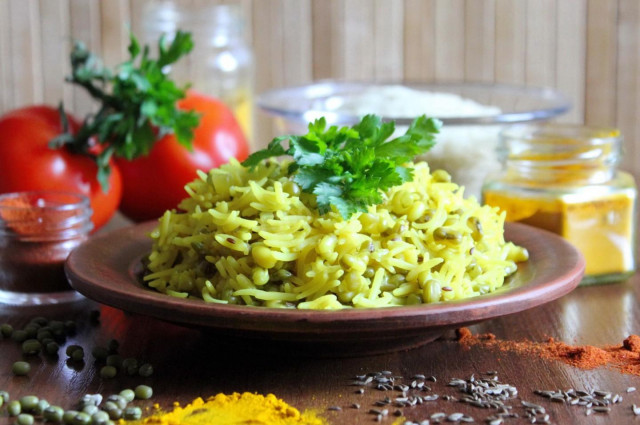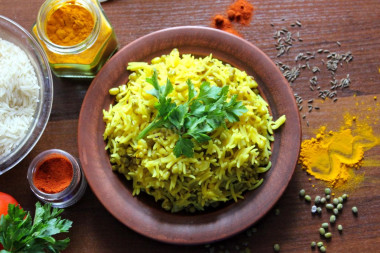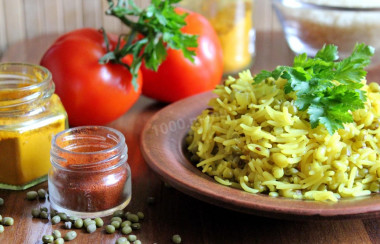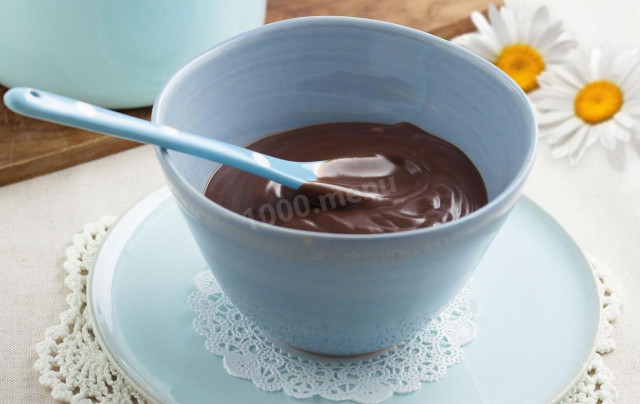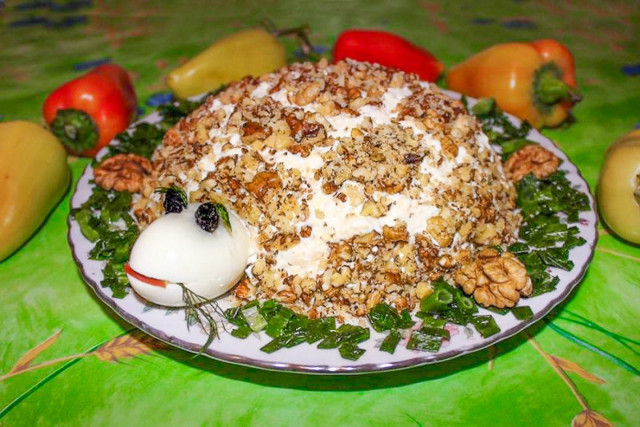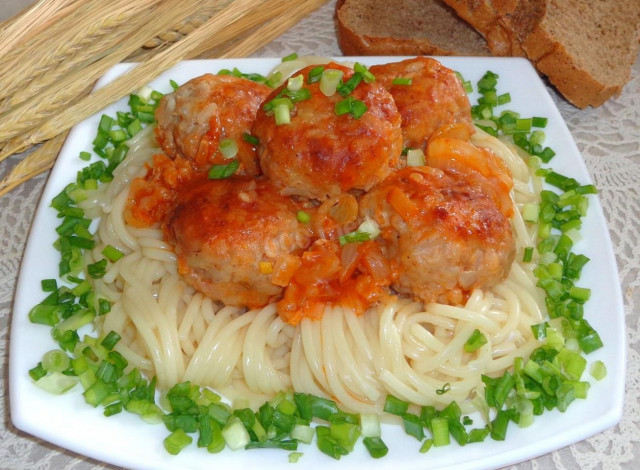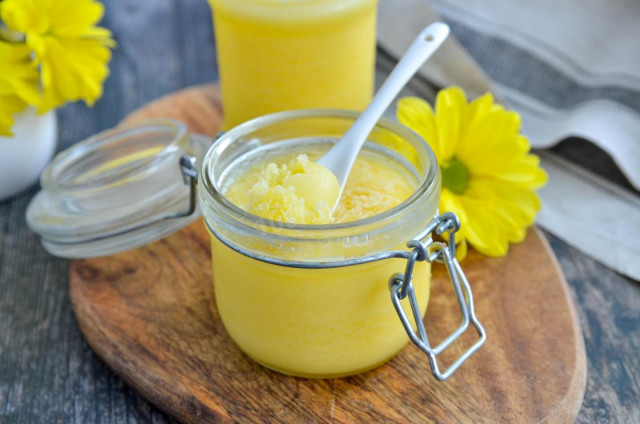Composition / ingredients
Step-by-step cooking
Step 1:
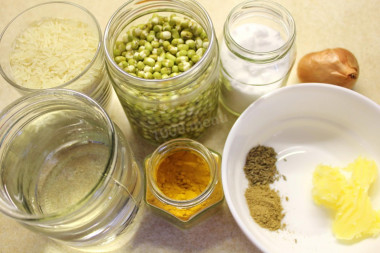
How to make kichari? Prepare the necessary ingredients. Wash the mash and soak it overnight.
Step 2:
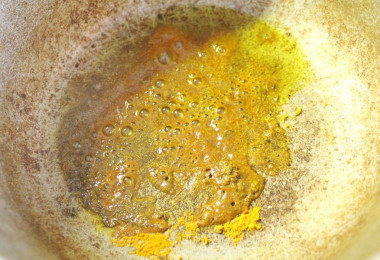
Put the Ghee oil in a cauldron and when it melts and heats up, put all our spices there to reveal their taste and aroma.
Step 3:
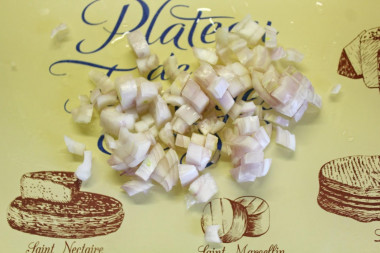
Meanwhile, peel and finely chop the onion.
Step 4:
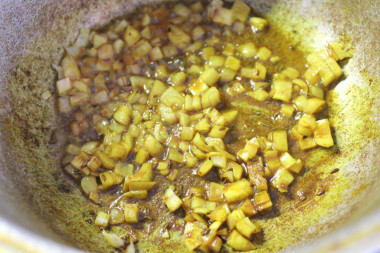
Fry the onion in oil with spices.
Step 5:
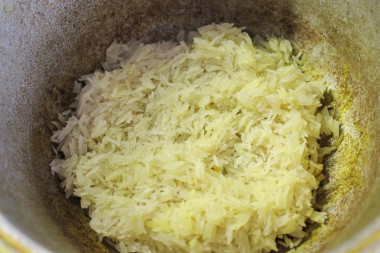
Then rinse the rice several times and put it in the cauldron to the onion.
Step 6:
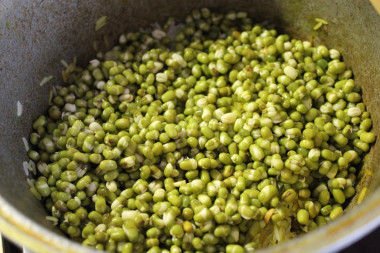
Put the washed mash on top of the rice. Mix the contents of the cauldron so that rice and mash are mixed with spices.
Step 7:
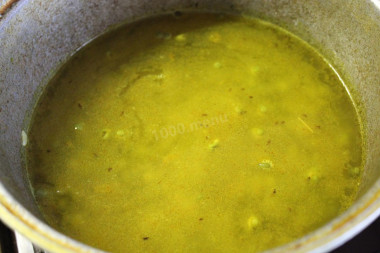
Then pour 1:2 water into the cauldron, add salt and cook the rice with mash until the water completely evaporates. When all the water is gone, our kichari is ready.
It is believed from the point of view of Ayurveda that this dish balances all the energies in the human body, which leads to healing, rejuvenation, cleansing from toxins. There is even a mono diet based on the use of kichari. Since it contains the optimal amount of proteins, fats and carbohydrates. And also a lot of vitamins and trace elements.
It is better to choose basmati rice, it is considered the most optimal for this dish. But if you take another one, such as for pilaf - long-grained steamed, you can also try it.
Mash, which is included in the recipe, is a legume plant. It is also called mung dal or mung beans. A very nutritious and easily digestible product. If you haven't soaked the mash overnight, you can soak it for two hours.
Ghee butter (Ghee) is a melted butter that does not contain either casein or lactose. It can be replaced for vegans with coconut oil or other vegetable oil. If you are not a fan of Indian cuisine, then you can just take cream.
This is a basic recipe. You can add different vegetables, such as carrots, squash, pumpkin or even buryak. In addition to vegetables, you can also add additional spices. For example, chili pepper to make it sharper, or ginger. You can also add whole mustard seeds, dill and fennel, asafoetida. Asafoetida is a spice that tastes like onions with garlic. In general, you can try which combinations you like best.
Kichari is good to eat at any meal, as rice and mash are wonderfully absorbed by the body. And spices also help this process.
Bon appetit!
Important! To make rice dishes invariably delicious, read the article about the subtleties of choosing rice and the secrets of its preparation .
Since the degree of salinity, sweetness, bitterness, sharpness, acid, burning is individual for everyone, always add spices, spices and seasonings, focusing on your taste! If you put some of the seasonings for the first time, then keep in mind that there are spices that it is especially important not to shift (for example, chili pepper).
Any oils are useful only until a certain temperature is reached - the point of smoking, at which the oil begins to burn and toxic substances, including carcinogens, are formed in it. How to determine the roasting temperature and choose the best oil for frying, and which is better not to use at all, read here .
Caloric content of the products possible in the composition of the dish
- Turmeric - 325 kcal/100g
- Zira - 112 kcal/100g
- Water - 0 kcal/100g
- Onion - 41 kcal/100g
- Sea salt - 0 kcal/100g
- Ghee - 892 kcal/100g
- Ground coriander - 25 kcal/100g
- Mash - 300 kcal/100g
- Basmati rice - 347 kcal/100g

